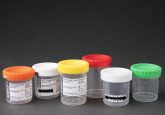5. With the increase in research into metabolites how can the field be regulated and standardized?

Adam Rosebrock: “Regulatory oversight of LC–MS in the clinical lab is an area of well-trodden ground. I expect that most clinical assays will stay in the laboratory-developed-test space for the foreseeable future, as there is still significant innovation happening on separation, spectrometry and software. A number of vendors are starting to market instruments specifically for in vitro diagnostic use, but – undoubtedly biased by the fact I’m faculty in a pathology department in an academic medical center – my bet is that the mass spectrometer will serve as a data collection, not black-box-diagnosis, tool for some time.
Standardization of LC–MS metabolomics is already happening, but I hope there is more to come. There is a large block of users who are more interested in making measurements of biological specimens than in developing methods. These users typically implement published methods or purchase vendor-supplied libraries and pre-configured instruments. There are far too many different analytes of interest for the field to converge on one chromatography mass spectrometer platform, but I hope that the trend toward building and implementing de facto standard approaches continues.”
Dajana Vuckovic: “I think we need to work as a community and apply the highest quality standards to our metabolomics work. As reviewers or journal editors, this means we must reject poorly designed or executed studies. We should all ask for more stringent identification data. We should question metabolite stability if an unstable metabolite is proposed as a biomarker and also question putative biomarker specificity if yet another ‘housekeeping’ metabolite is proposed as a diagnostic marker for yet another disease.
As scientists, we also need to provide our young researchers and any new researchers entering the field with extensive training and guidelines for what makes a high-quality metabolomics study. Our participation in inter-laboratory studies will further help us standardize our findings and shed light on factors that address reproducibility. I believe it is critical for all of us to participate in such international efforts. Finally, follow-up validation studies in independent cohorts are critical to show reproducibility and validity of metabolomics findings, and translate metabolomics into clinical practice.”
Ian Wilson: “The large number of different laboratories performing, or attempting to perform, metabolic phenotyping, each with their own analytical platforms and procedures, makes this regulation and standardization a very difficult problem. The increasingly widespread use of quality control methods represents a good advance and Journals could help this by insisting on minimum standards for publication including provision of the QC data. The differences in analytical methodology used need not be a huge problem if we accept that the ‘omics’ phase is mapping, understanding and discovery of potentially useful biomarkers that provide a mechanistic insight into the process/disease etc. This is because any biomarkers (either individual molecules or more likely specific patterns of metabolites) to be used clinically will have to be analyzed with properly validated targeted and specific methods, and so can be tested for their utility by anyone with an interest in using them.
Indeed, in my opinion, the benefit of metabolic phenotyping comes from this phase where these metabolites transition from the world of discovery ‘omics’ into clinical chemistry with properly validated assays of fully characterized metabolites.”
Fengguo Xu: “Every step within the metabolomics workflow should be standardized and regulated, including sample preparation, data acquisition, data pre-processing, multivariate data analysis, metabolites identification and pathway analysis. Generally, some overlooked procedure might influence the resulting interpretation, such as storage conditions of biological samples, different sample extraction methods, specific data cleaning and filtration.
Moreover, the screened out metabolites corresponding to a certain disturbance might be in arrangement via statistical analysis and development of open-source libraries, paving the way for ‘global metabolomics’.”






